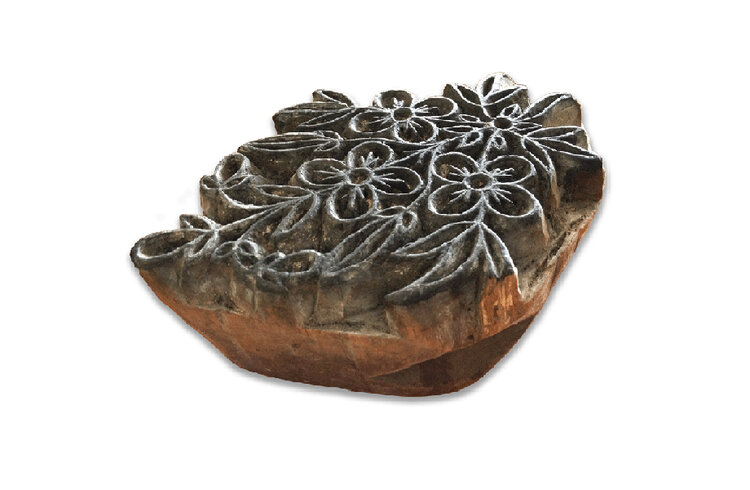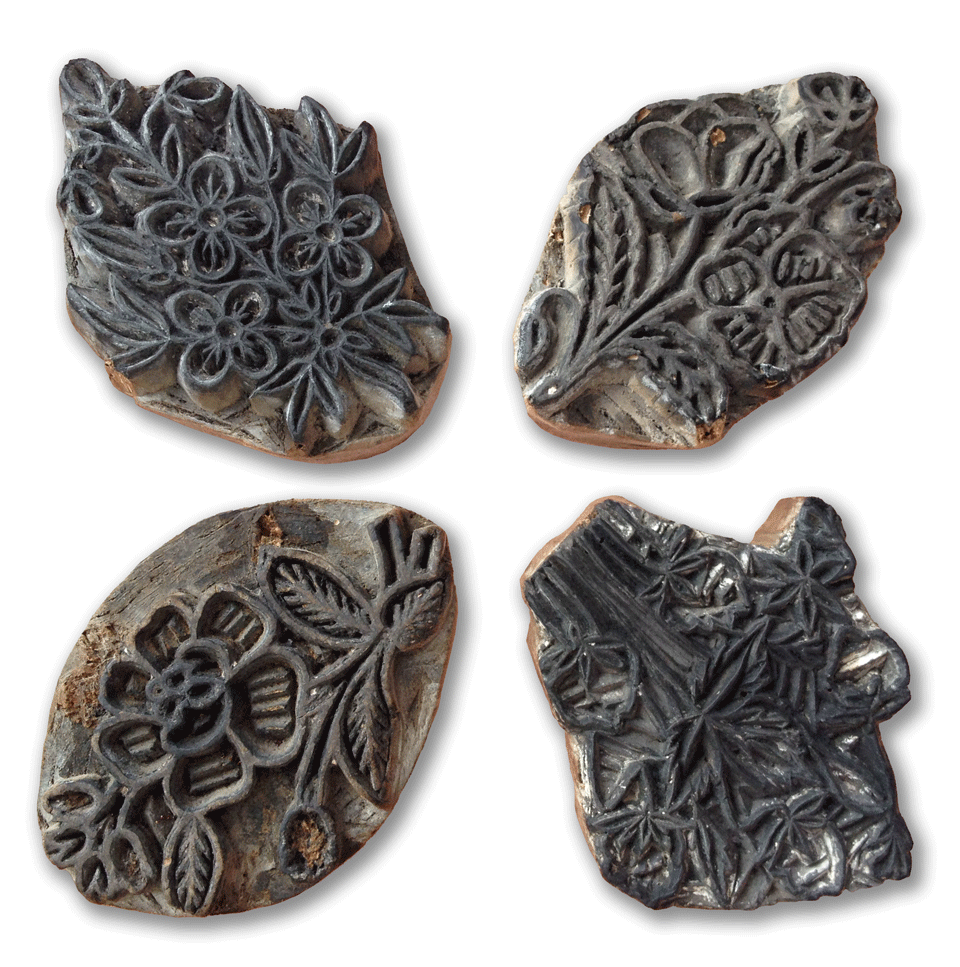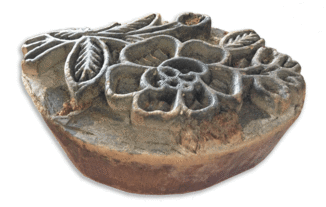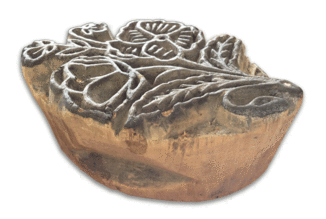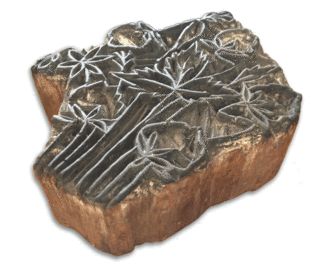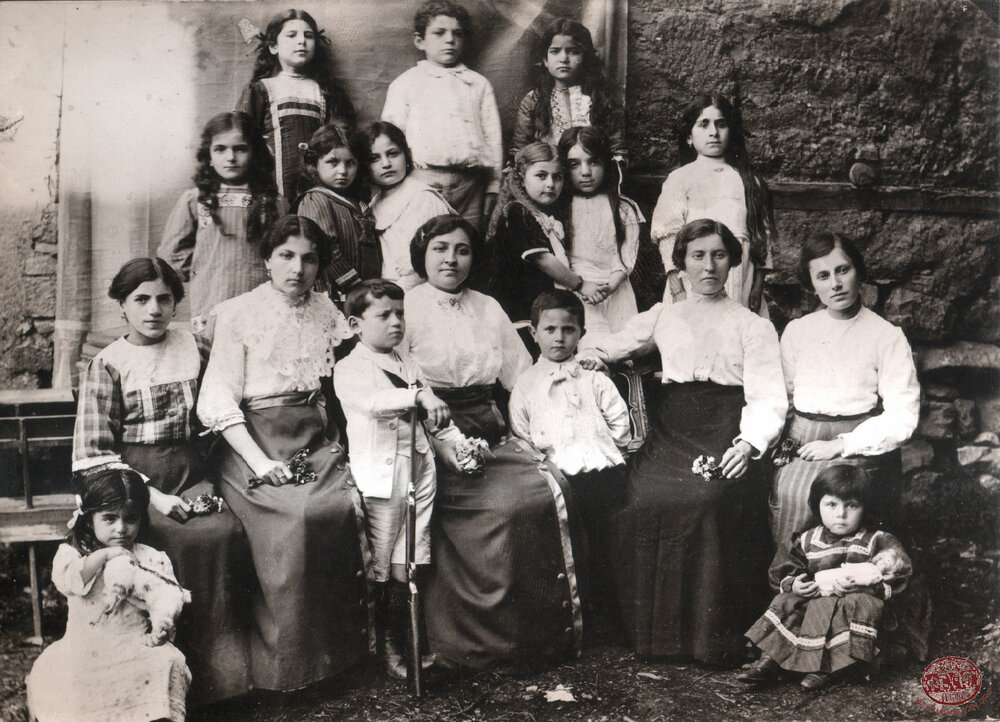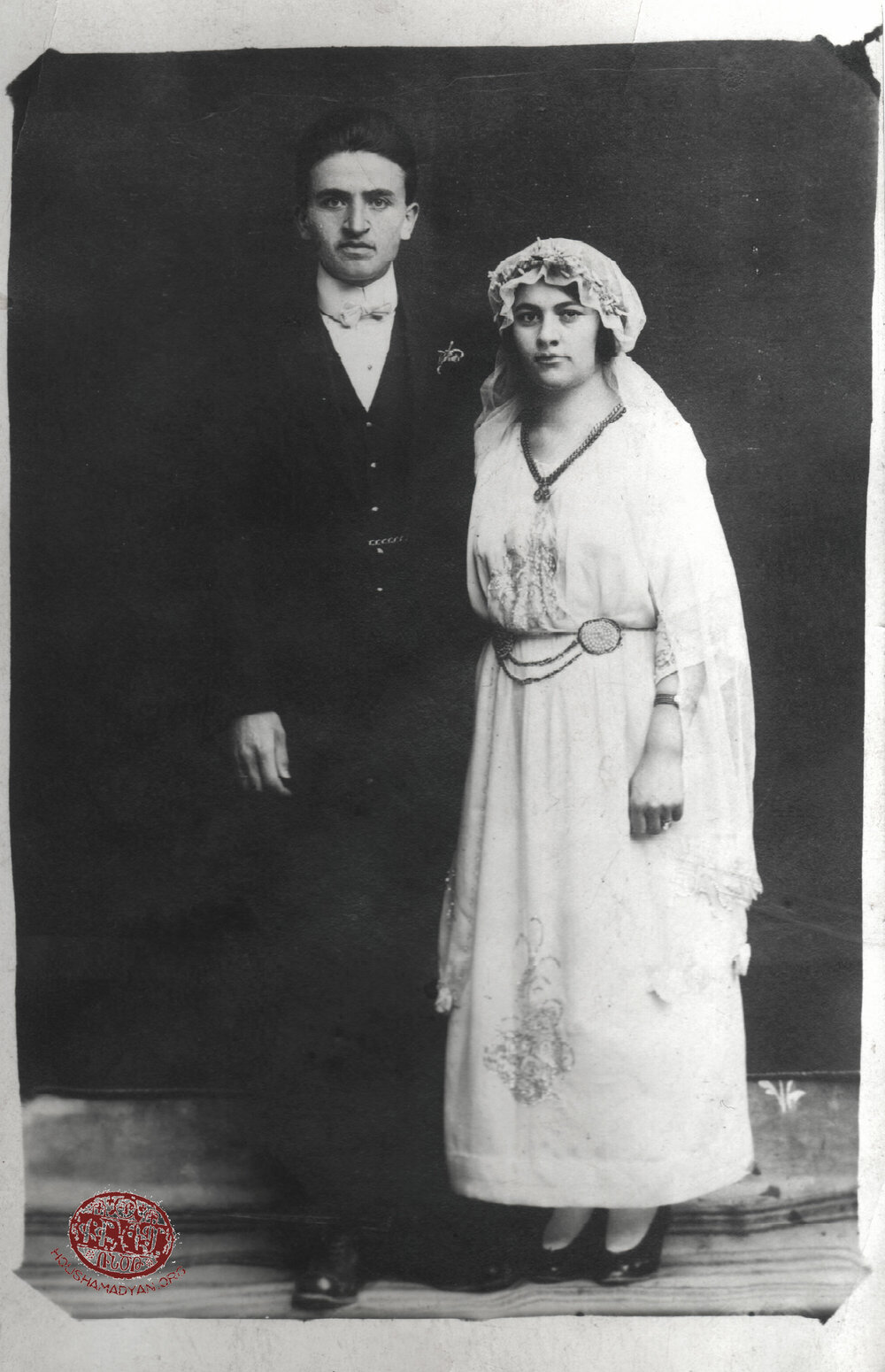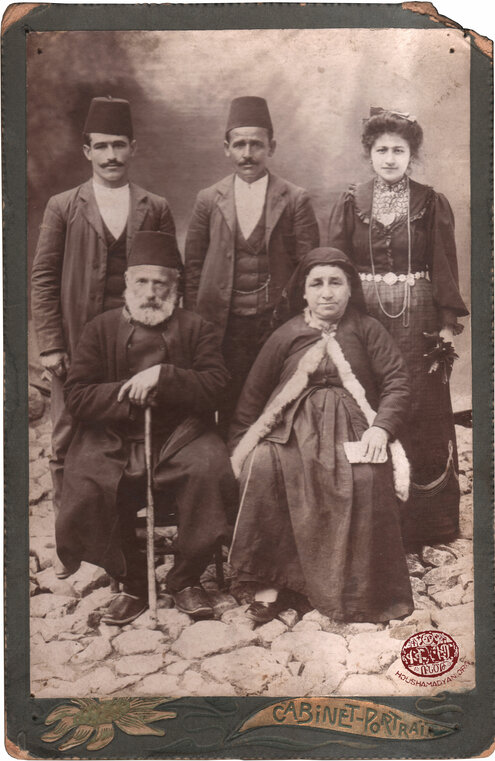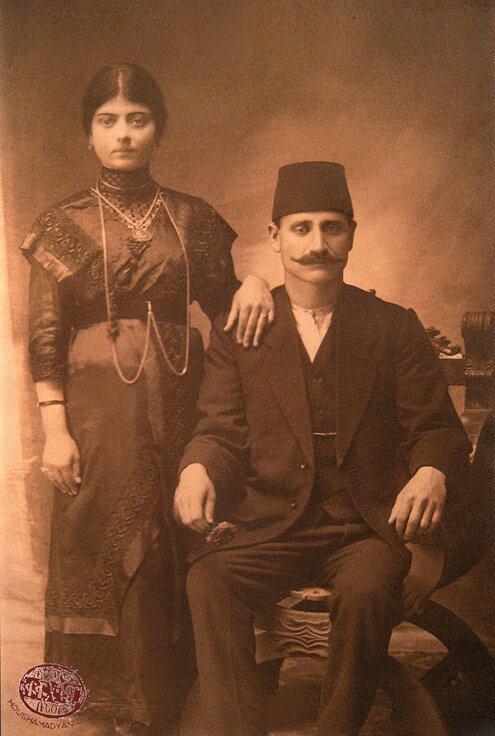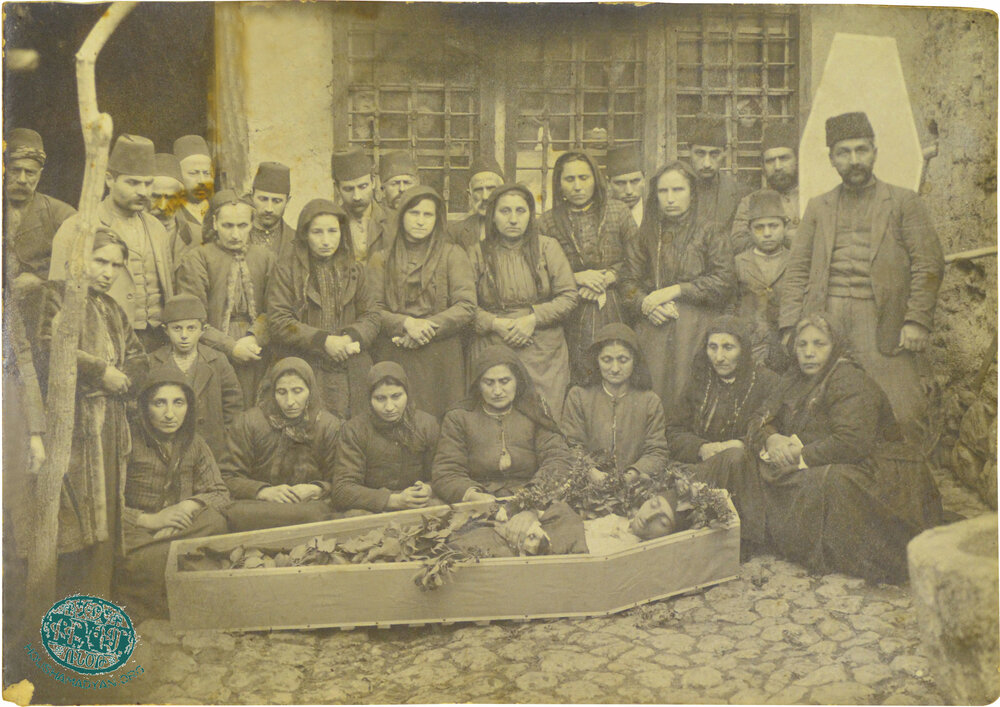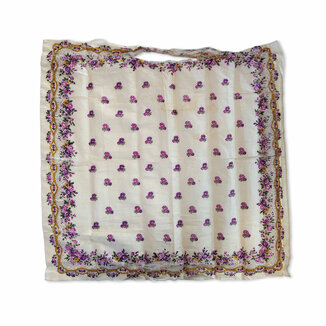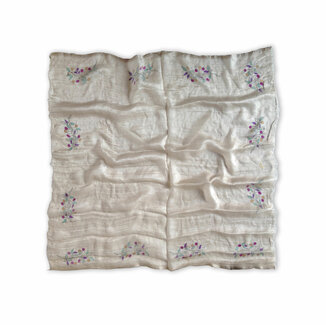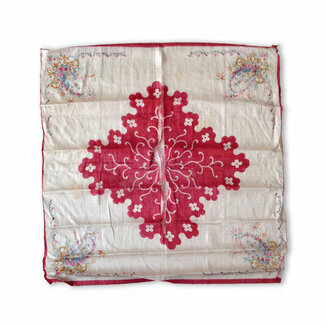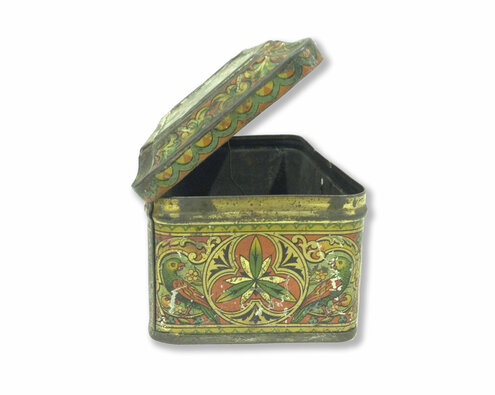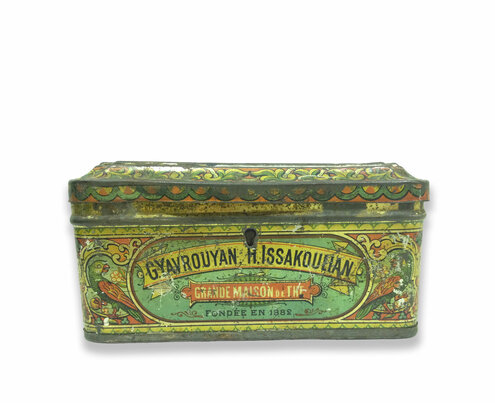Miscellaneous - Turkey
These four fabric printing wooden blocks are from Tokat. They are probably made from linden tree wood, because linden wood is soft and white and it is easy to carve ornaments on it.
They belonged to Azad Yazdanoglu, born in Shabin Karahisar (Şebinkarahisar), died in Istanbul in 1952. Armine Yazdanoglu, Azad’s granddaughter, tells that “yazmadji’s” (those who print on fabrics) would gather, dip these printing blocks into dye and make prints on fabrics. They would also use seawater on the fabrics because the salt would strenghten the prints, they would later hang them to dry along the seashore... Each wooden block had its special name, probably after the flower or plant print that it bore.
During the Genocide, the Armenian population of the village where Azad lived, were wiped out. Azad and his family survived because he was a miller by profession and his work was considered important. They continued to live in Shabin Karahisar until the 1930’s, later they moved to Istanbul. In Istanbul, Azad worked as a porter in Kumkapı for a while. Later, he relied on a craft he had learnt from his father-in-law, and started weaving fabric along with his whole family.
These wooden printing blocks were given to them by friends from Tokat and which they used in their profession. They are currently in the possession of Armine Yazdanoglu, in Kınalı Island, Istanbul.
Lerna's Collection (Keepsakes from Asdvadzadourian and Niksarlian Families), Istanbul

The items and photographs presented here were provided to us by Lerna during an event organized by Houshamadyan in December of 2015, at the Hrant Dink Foundation in Istanbul.
Lerna and her mother, provided detailed information regarding the provenance of these items, and regarding their original owners: the Asdvadzadourian family of Tokat/Yevtogia and Niksarlian family of Amasya, whose descendants are currently living in Canada, USA and Turkey.
After surviving the Genocide, in the 1940s, the Asdvadzadourian family left Tokat and resettled in Samsun, where Lerna’s grandmother, Koharig Asdvadzadourian was married to Hagop Niksarlian and moved to Hagop’s hometown--Amasya. In the late 1960s, Niksarlian family left their hometown Amasya for Istanbul. The keepsakes that we detail below travelled with the family and moved from Tokat to Samsun and then to Amasya and finally to Istanbul.
Wedding photograph, Haiganoush Asdvadzadourian (nee Mnatsaganian) and her husband Aram Asdvadzadourian, in Tokat, circa 1923. The pendant hanging from Haiganoush’s neck is her husband’s wedding gift to her, and was crafted in Aleppo. The pendant was later inherited by the couple’s daughter, Koharig, and is currently in the possession of Koharig’s daughter.
Haiganoush and Aram were both survivors of Genocide. While Haiganoush and her mother Isghouhi, as a widower, managed to avoid deportation, during those years of terror, Aram’s family had been driven out of their native Tokat, to Malatya, where some of the family members had been murdered. Only three of the family children’s survived and later made it back to Tokat – Aram, Vartouhi, and Arshavir. One of their sisters, Koharig, was also killed during this time.
Aram and Haiganoush Asdvadzadourian would have five children – Garabed, Koharig, Dikran, Adrine, and Vahe. In Koharig’s memory, Aram and Haiganoush would name their first daughter after her. Later their first great granddaughter woud also be named Koharig.
1) We have no reliable information regarding this photograph, but it is presumed that it depicts the family of Aram Asdvadzadourian’s sister, Koharig. Her husband was a prominent Armenian trader from Tokat, and a member of the Abdalian family. They would all die during the Genocide.
2) This photograph depicts Koharig Asdvadzadourian’s husband Hagop Niksarlian’s parents, Kevork and Nvart. Nvart's father was a miller/baker in Amasya, and for that reason, he was spared deportation during the Genocide. He and his family continued living in Amasya, and chose to convert to Islam to avoid deportation. Kevork was in rope making business, but he too managed to convert to Islam and was also spared deportation. During these years, Nvart was given the new Muslim name of Fahriye, and Kevork became Ahmed. They took up their Armenian names and reclaimed their identity later in the 1920s.
We have no detailed information regarding this photograph. We know that it was taken in Amasya during a funeral. The deceased was an Armenian soldier serving in the Ottoman Army, who hailed from Samsun, but was stationed in Amasya. We know that Armenians began serving in the Ottoman Army only after the establishment of Ottoman constitutional regime in 1908, which indicates that in all probability, the photograph was taken sometime between 1909 and 1915.

